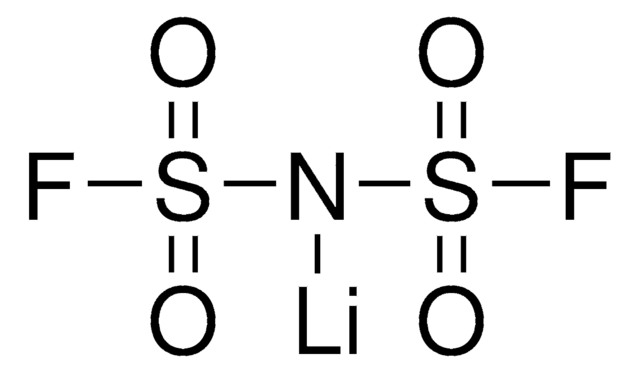933708
Lithium difluorophosphate

≥99% trace metals basis, acid ≤ 200 ppm, battery grade
Synonym(s):
LiDFP, LiF2PO2, Lithium difluorophosphinate, Lithium phosphorodifluoridate
About This Item
Recommended Products
grade
battery grade
Quality Level
description
acid ≤ 200 ppm
Assay
≥99% trace metals basis
form
powder
impurities
≤200 ppm acid
cation traces
Ca: ≤5 ppm
Cr: ≤10 ppm
Fe: ≤5 ppm
K: ≤5 ppm
Na: ≤5 ppm
Pb: ≤5 ppm
application(s)
battery manufacturing
General description
Application
related product
Signal Word
Danger
Hazard Statements
Precautionary Statements
Hazard Classifications
Acute Tox. 3 Oral - Acute Tox. 4 Dermal - Aquatic Chronic 2 - Eye Dam. 1 - Skin Corr. 1B - STOT RE 1
Storage Class Code
6.1C - Combustible acute toxic Cat.3 / toxic compounds or compounds which causing chronic effects
WGK
WGK 3
Certificates of Analysis (COA)
Search for Certificates of Analysis (COA) by entering the products Lot/Batch Number. Lot and Batch Numbers can be found on a product’s label following the words ‘Lot’ or ‘Batch’.
Already Own This Product?
Find documentation for the products that you have recently purchased in the Document Library.
Our team of scientists has experience in all areas of research including Life Science, Material Science, Chemical Synthesis, Chromatography, Analytical and many others.
Contact Technical Service











